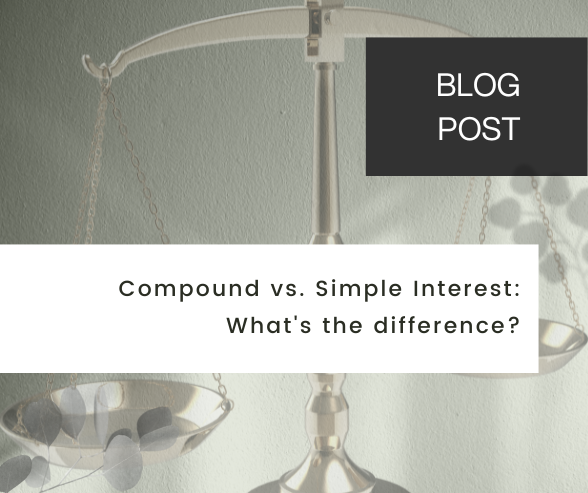
Compound Interest vs. Simple Interest: What’s the big deal?
Do you have a checking or a savings account where you keep your money? If yes, good news! You’ve already started into the world of saving and earning interest (just probably not making very much in interest, but we’ll get to that!) You’re one step ahead of many people. Most people don’t know what the difference is between compound interest and simple interest and how one can mean more money in your pocket! Both can effect your money in different ways, let’s us explain.
What is Simple Interest?
Imagine you saved $100, and your parents promised to pay you 5% interest each year as a thank-you for saving. Simple interest is pretty easy to calculate. It means you earn interest only on the original amount you saved. So, at the end of the first year you get 5% of $100, which is $5. Now you have $105. Simple as that.
How to calculate simple interest:
Interest = Principal × Rate × Time
In the example above, the Principal is your original amount ($100), the Rate is 5% (show as 0.05), and Time is 1 year. So, your interest for one year would be $100 × 0.05 × 1 = $5. If you had two years you would have $100 x 0.05 x 2 = $10
What is Compound Interest?
Compound interest is like a magic trick for your savings (if you’re looking for more magic, visit our Rule of 72 for Doubling Your Money blog article). It's not just interest on your original amount but also interest on the interest you've already earned. This might sound a bit confusing, but let's break it down with an example.
You have your $100, and you're still earning 5% interest. At the end of the first year, you would have $105. Then, in the second year, you earn interest on that $105, not just the original $100. So, for the second year, you'd earn 5% of $105, which is $5.25. Now you have $110.25.
The equation for compound interest is a bit more complicated so it’s best to use calculators but here it is:
Compound Interest = Principal × (1 + Rate)^Time
Here, the Principal is still $100, the Rate is 5% (or 0.05), and Time is the number of years. After 2 years, you'd calculate it as $100 × (1 + 0.05)^2.
This means that your EARNED money is earning money for you.
Why Does It Matter?
Understanding these two types of interest is essential for making smart decisions with your money. Let's look at a longer-term example.
Say you saved $500 in an account with compound interest at a rate of 5%, and your friend saved the same amount but with simple interest at the same rate. After 10 years, who will have more money?
Using the formulas mentioned above, we find that with simple interest, you'd earn $500 × 0.05 × 10 = $250 in interest. So, you'd have $750 in total.
With compound interest, it gets more exciting. Just calculate $500 × (1 + 0.05)^10, which is about $814.45 in interest. So, you'd have a total of $1,314.45. That’s a lot more than with simple interest.
Real-Life Applications
Understanding how interest can be calculated isn't just for math class. It applies to real life, too. When you’re thinking about saving for things like a car, college, or even retirement, knowing the difference between compound and simple interest can help you make better choices about where to put your money. Banks, credit cards, and loans often use these concepts, so understanding them can help you save more or avoid paying extra in interest.
If you're a visual learner, check out this video to help out a little bit more.
